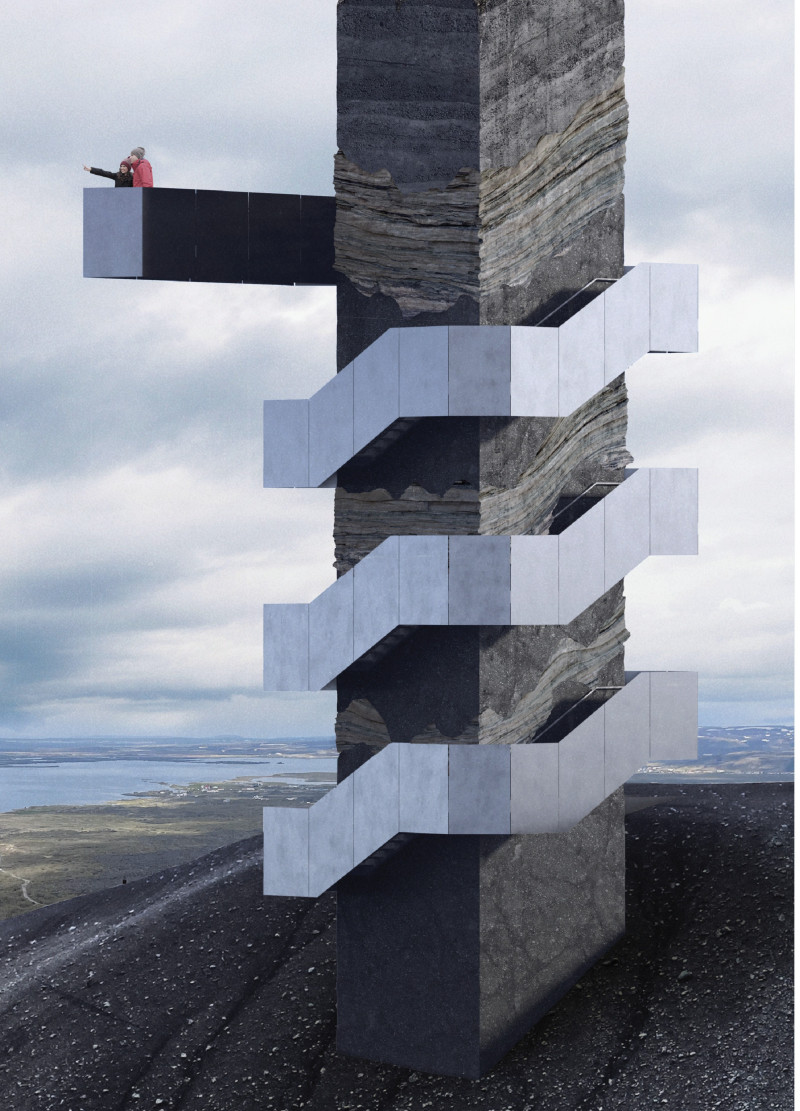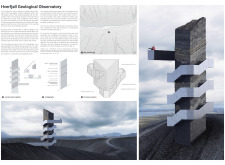5 key facts about this project
The architectural concept is rooted in geological stratigraphy, reflecting the layers and textures of volcanic formations. The structure's mass is primarily composed of reinforced concrete, ensuring durability while withstanding the region's harsh environmental conditions. The observatory features a series of interlocking forms that mimic the stratified layers found in natural rock formations, effectively anchoring the building within its landscape.
Structural Integrity and Materiality
The observatory utilizes a combination of materials that contribute to both its aesthetic and structural integrity. Reinforced concrete is complemented by galvanized steel components, which include steel treads for the staircase and hollow sections for framing. Stainless steel panels provide an additional layer of protection and a modern finish that interacts dynamically with light. These choices emphasize the project's commitment to durability and minimal maintenance.
The design promotes accessibility and visitor engagement by incorporating expansive viewing platforms that offer panoramic vistas of the surrounding geological features. The staggered arrangement of the observatory enhances its visibility from multiple angles, allowing it to blend with the natural contours of the land.
Innovative Design Approaches
One of the unique aspects of the Hverfjall Geological Observatory is its thoughtful integration with the environment. Rather than imposing on the landscape, the building enhances it by creating a visual narrative that draws attention to the geological formations and natural beauty of the area. The observatory encourages users to explore and interact with their surroundings, fostering a deeper appreciation for the geological history of Hverfjall.
Incorporating local materials further reinforces the observatory’s connection to its context, mitigating environmental impact while ensuring longevity. The structured layering approach not only pays homage to geological processes but also engages visitors in a tactile experience, allowing them to explore the building’s various levels and viewpoints.
The architectural design provides an educational component, inviting researchers and enthusiasts alike to engage with Iceland's geological phenomena. The observatory stands as a testament to the ability of architecture to enhance understanding of natural landscapes.
For a comprehensive understanding of the Hverfjall Geological Observatory, including architectural plans, sections, and design concepts, readers are encouraged to explore the project presentation in detail. This resource offers valuable insights into the architectural ideas that define this remarkable observatory.























